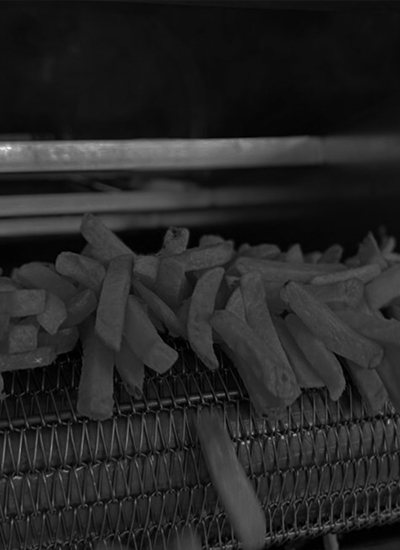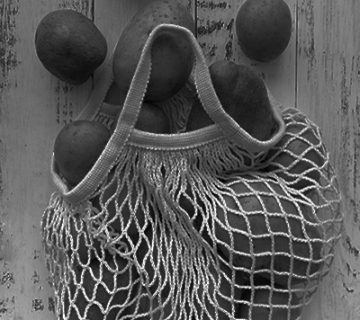The French fries production line is one of the most important industrial setups within the food industry due to the high demand for this popular product. It includes multiple stages, each utilizing specialized equipment to ensure the final product is of high quality, has a long shelf life, and an appealing appearance. In this article, we will explore the machines used in the production line and explain how they work. —
### 1. Washing and Sorting Machine The first step in the production line is washing the raw potatoes thoroughly to remove surface dirt, soil, and debris. This process is performed with industrial washing machines equipped with high-pressure sprays and brushes. – Features: – Performs thorough washing of potatoes. – Transfers cleaned potatoes to the peeling machine. – Importance: – Ensures the next steps proceed smoothly and prevents damage to subsequent equipment. —
### 2. Peeling Machine The peeling machine removes the potato skin efficiently. There are two common methods for peeling: – Abrasive peeling: Uses friction to remove skin by grinding the potato surface. – Steam peeling: Applies high-pressure steam to detach the peel, offering faster peeling and minimizing waste. – Features: – High efficiency and speed. – Reduces product waste while maintaining quality. —
### 3. Cutting Machine The peeled potatoes are fed into the cutting machine, where they are shaped into uniform pieces, such as thin or thick strips, depending on the desired style of French fries. – Features: – Adjustable settings for the size and type of cut (e.g., traditional fries or crinkle-cut). – Stainless steel blades for precision and durability. – Importance: – Produces consistent results for even cooking and satisfies visual standards. —
### 4. Blanching Machine Blanching is a critical step that involves immersing the cut potatoes in hot water or steam for a specific period. – Purpose: – Removes excess starch. – Improves color, texture, and overall flavor. – Features: – Temperature and time controls for precise blanching. – Energy-efficient designs. —
### 5. Drying Machine After blanching, the slices are fed into the drying machine to remove surface moisture. This step is crucial in ensuring high-quality fries. – Drying Methods: – Hot air drying. – Industrial drying tunnels. – Importance: – Prevents excess oil absorption during frying. – Extends product shelf life for frozen or packaged fries. —
### 6. Industrial Fryer Machine During this stage, the potato strips are fried in hot oil using an industrial fryer to achieve the crispy and flavorful texture of French fries. – Features: – Precise temperature control to prevent burning. – Conveyor systems for continuous frying. – Oil efficiency mechanisms to reduce waste. —
### 7. Cooling Machine After frying, the fries are cooled to lower their temperature to prepare them for packaging or freezing. – Advantages: – Preserves the product’s quality. – Maintains the fries’ fresh taste and texture. —
### 8. Quick Freezing Machine (IQF – Individual Quick Freezing) For frozen French fries, this step involves flash freezing the fries individually to prevent them from clumping together. – Features: – Rapid freezing to preserve freshness, taste, and texture. – Ensures uniform freezing for consistent quality. —
### 9. Packaging Machine The final stage involves packaging the fries into consumer-friendly packs. Suitable packaging methods extend the fries’ shelf life while preserving quality. – Packaging Methods: – Vacuum packaging. – Modified Atmosphere Packaging (MAP). – Heat-sealing machines for airtight packaging. – Importance: – Prevents air exposure and oxidation. – Enhances the product’s presentation for retail purposes.
### Conclusion
A French fries production line is a sophisticated collection of modern machinery, designed to produce high-quality and in-demand products. Selecting the right equipment based on production capacity and market needs is a vital step toward achieving success in this industry.


No comment